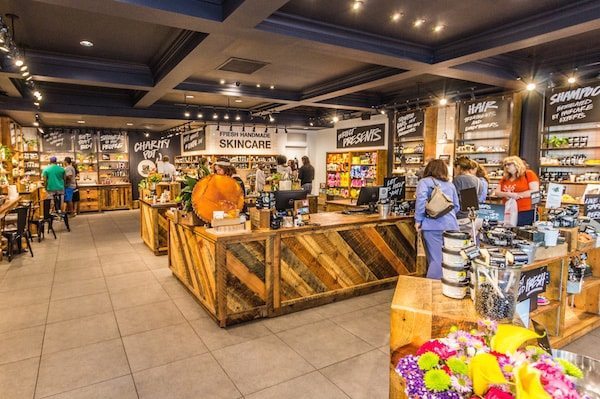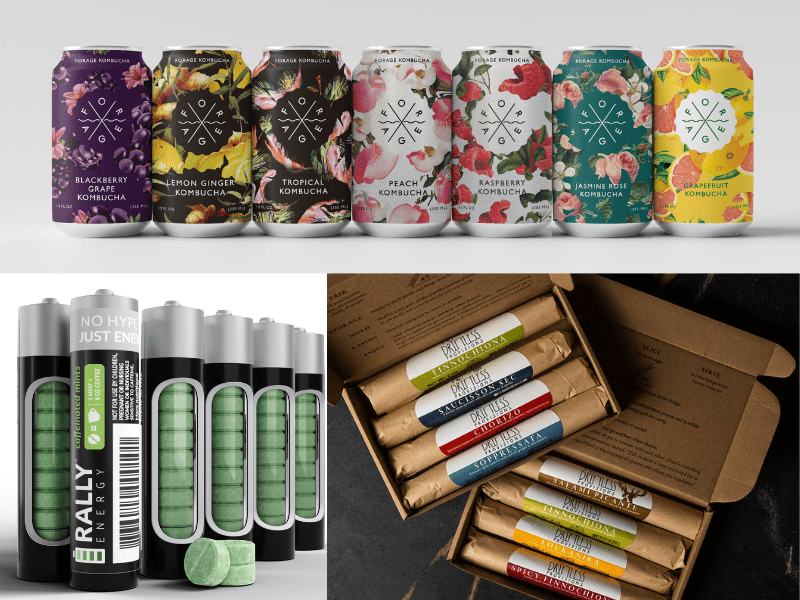There is an old adage in business that “the customer is always right.” If you have ever worked in retail foodservice, or retail anything, you know that consumer tastes have evolved at a rapid pace over the last decade, and sometimes figuring out where the consumer is at is quite difficult. They are discovering preferences they didn’t know they had. They are acutely aware of the supply chain, but maybe not its complexity. Despite the paradox of choice making consumers unhappy and less fulfilled in some cases, typical grocery stores now have around 50,000 SKUs i.e. choices, with many individual categories being saturated with too many choices as well.
Food consumers are not always rational. They don’t always have the time to fully understand the science behind product formulations or the realities of sourcing high quality ingredients in the supply chain. Brands are meant to communicate with consumers in an emotional way and are meant to help tell these stories in a concise, relatable way so the consumer can make an informed decision.
Take milk as an example. Dairy is big in our state of Wisconsin, but cow’s milk has been losing market share to plant-based milks. This is in part because plant-based milk companies and brands are meeting a growing consumer demand for more choices on different occasions, consumer perceptions about the environmental consequences of animal agriculture and consumers seeking more innovation in flavors, packaging, etc. You could ask whether the consumer is “justified” or not in their rationale for pursuing plant-based milk alternatives, but that is not really a business question. The business questions in this case are “How can we speak clearly and concisely to our target consumer so they understand our products’ advantages? What are the ways we can innovate to provide products that meet a real or perceived consumer need?”
Finding out what resonates with the consumer when developing/launching products necessitates high quality market research around what categories are accelerating or declining, what claims are resonating with consumers, how packaging is driving sales and what new product launches say about innovation in the category in question. If you don’t have the budget for market research data from groups like Mintel or SPINS, you can gather feedback about products by interacting with target consumers through farmers markets, demos at grocery stores and shop alongs.
Food businesses should align their products and branding with their target consumers and should use market research to understand what the marketplace is asking for. Acquiring and keeping customers is what drives successful businesses and customers’ preferences must be met in order to have a financially viable business. Customers may not always seem to make the “right” choices from every food business owner’s perspective. However, at the end of the day, customers are how you get paid.
And now, our roundup of the best food and beverage finance news, events and resources from around the web…
Business Model Insights
- 7 Tips for Starting a Food Business (SBA Blog) – “Starting a food business has to be one of the most challenging businesses to get into. The harsh reality is that most fail within the first year. The restaurant business in notoriously tough. While vision and ambitions are important, turning that ambition into success requires research, planning, capital, business acumen, and perseverance, more research and more planning.”
- Secrets to Growing Sales & Other Lessons (Chobani Incubator)
- How to Build Your Team (Project Nosh)

Raising Capital
- So… What Is My Valuation? (Project Nosh) – “How does one arrive at a fair valuation for shares of a private stock that has not recently been transacted (by NON friends and family members)? Like anything else one might wish to sell, such as a house or a car, it begins with ‘comps.’ When I ask a prospective client what they think might be a fair valuation for their business, I am looking for a rough sense of what they expect and whether it is fair and reasonable based on the current market. Unfortunately, there aren’t a lot of other tools that one can draw upon to assess (or defend) the valuation of an early-stage business with a limited operating history and/or not yet generating positive cashflow. So what is the right valuation for a growing brand, generating perhaps $5MM or $8MM in revenues, that makes a cool and timely natural product, with good growth and healthy margins? Short answer: whatever the market will bear.”
- How to tell investors what they want to hear (New Hope Media)
- Sale of RXBAR Highlights What Investors Are Missing (Project Nosh)
CPG/National Brands
- What holds more weight for emerging brands: Distribution or velocity? (New Hope Media) – “How many stores, shelves, doors, are you in or on? In some form, that is the most frequently asked question of a founder of an emerging brand. In my opinion, that question perpetuates the wrong strategic focus. Chasing all-commodity volume (ACV), getting sucked in by the allure of store count, can kill a brand before it ever really gets started. Unless an emerging brand has some compelling reason to be fast and first to market, focusing on building velocity is the smart strategic approach.”
- Emotional connection drives brand loyalty for 82% of consumers (Fierce Retail)
- The Whole Truth: A Wake-Up Call And Six Lessons For Emerging CPG Brands (Forbes)

Market Trends
- Whole Foods Market Reveals Top Food Trends for 2018 (Whole Foods via Business Wire) – “Plant-based diets and dishes continue to dominate the food world, and now the tech industry has been using science to advance recipes and manipulate plant-based ingredients and proteins, creating mind-bending alternatives like ‘bleeding’ vegan burgers or sushi-grade ‘not-tuna’ made from tomatoes. These new production techniques are also bringing some new varieties of nut milks and yogurts made from pili nuts, peas, bananas, macadamia nuts and pecans. Dairy-free indulgences like vegan frosting, brownies, ice cream, brioche and crème brûlée are getting so delicious, non-vegans won’t know the difference.”
- Per capita consumption of dairy milk beverages plunges; plant-based alternatives pick up the slack (Food Navigator USA)
- Report: 10 Trends to Watch in 2018 (Project Nosh)
Farming and AgTech
- The State of Play for Farm Robotics (AgFunder News) – “Labor is not the only pressing issue farm robotics startups stand to solve; the potential for precision agriculture and the resulting reduction in use of inputs such as chemicals and other natural resources is another exciting potential for the technology. The robots that will be used in food and agricultural applications will have to be much more flexible than what we’ve seen in automotive manufacturing plants in order to deal with natural variation in food products or the outdoor environment.”
- Saving Money, Time and Soil: The Economics of No-Till Farming (USDA)
- How Do Farm Hackers View Venture-Backed Agtech? (AgFunder News)

Deals/M&A
- Hungry for Investment: Big Food Races Toward Startups (CB Insights) – “Since 2015, global food giants from Tyson Foods to Land O’Lakes have launched venture funds and incubator programs to attract early-stage startups. These funds operate across various structures. Some, such as General Mills’ 301 Inc., are managed internally by the corporation; others, such as Campbell’s Acre Venture Partners, are managed by external investors with the corporation (e.g. Campbell’s) as the sole limited partner (LP).”
- Tyson Foods raises stake in plant-based protein maker Beyond Meat (Reuters)
- From Bezos to Walton, Big Investors Back Fund for ‘Flyover’ Start-Ups (New York Times)
Industry Events
- Moses Organic Farming Conference (MOSES) – $, 2/22 – 2/24 in La Crosse, WI
- Expo West (New Hope Network) – $, 3/8 – 3/11 in Anaheim, CA
- National Good Food Network Conference (Wallace Center) – $, 3/27 – 3/30 in Albuquerque, NM





